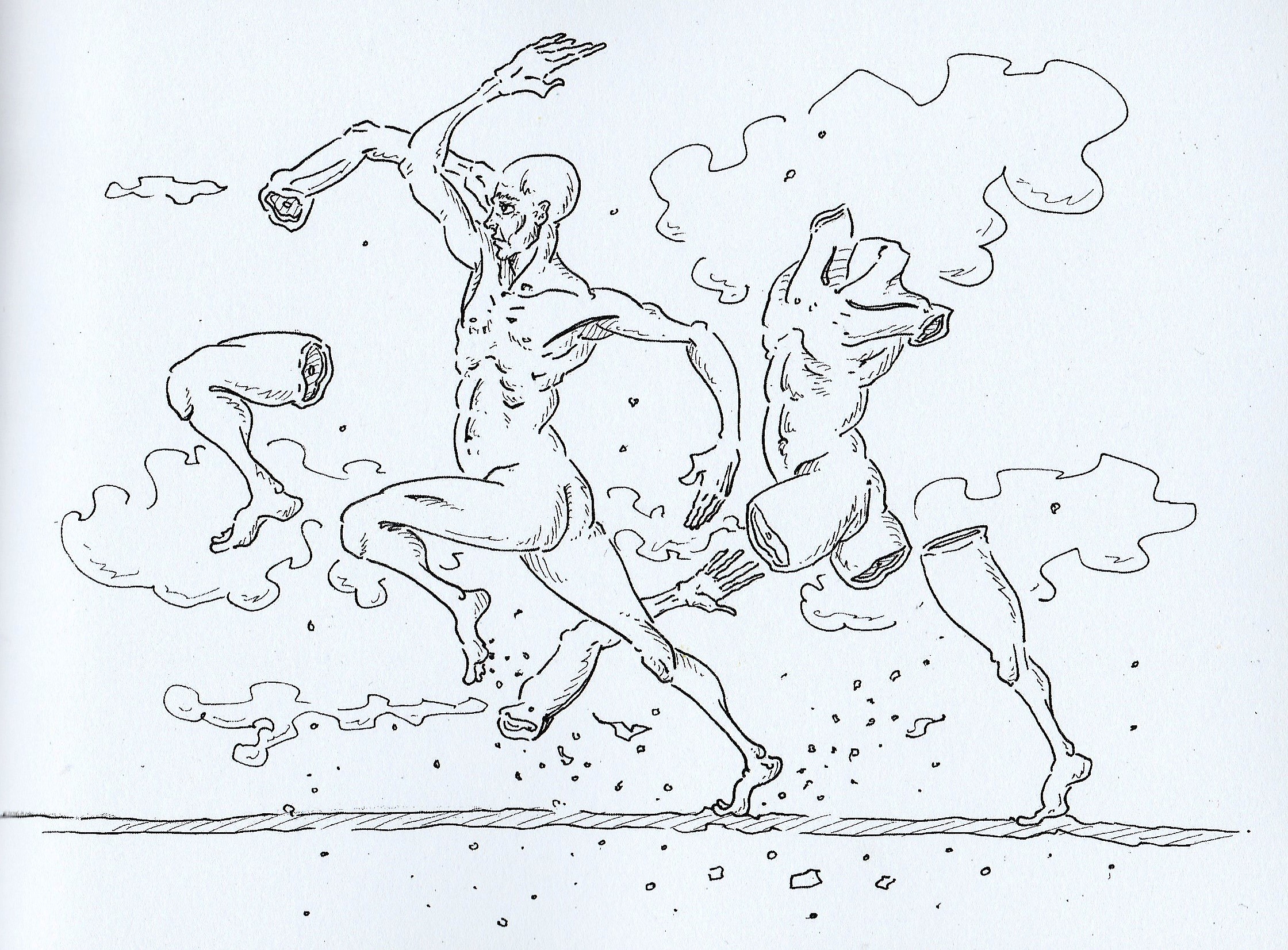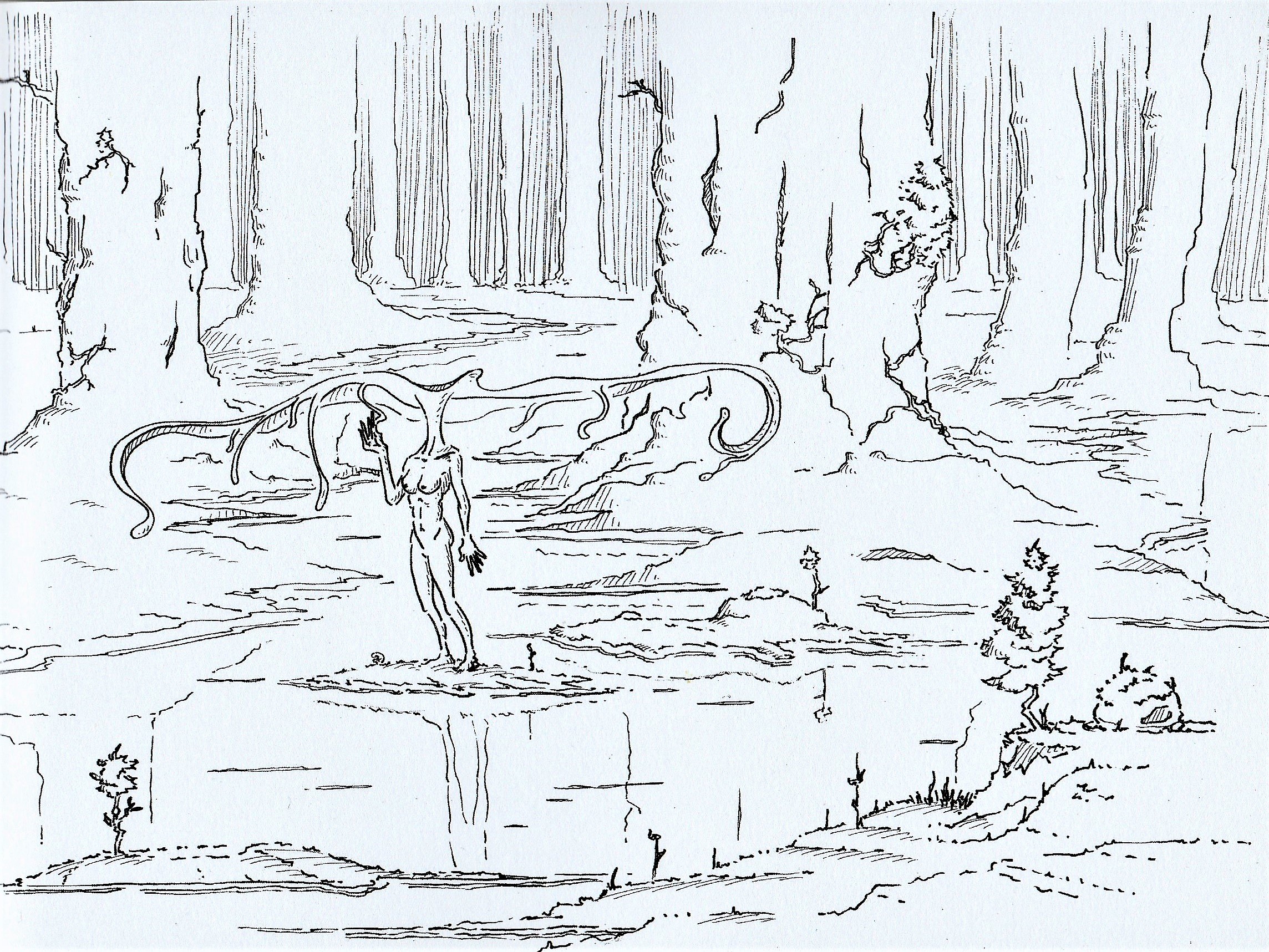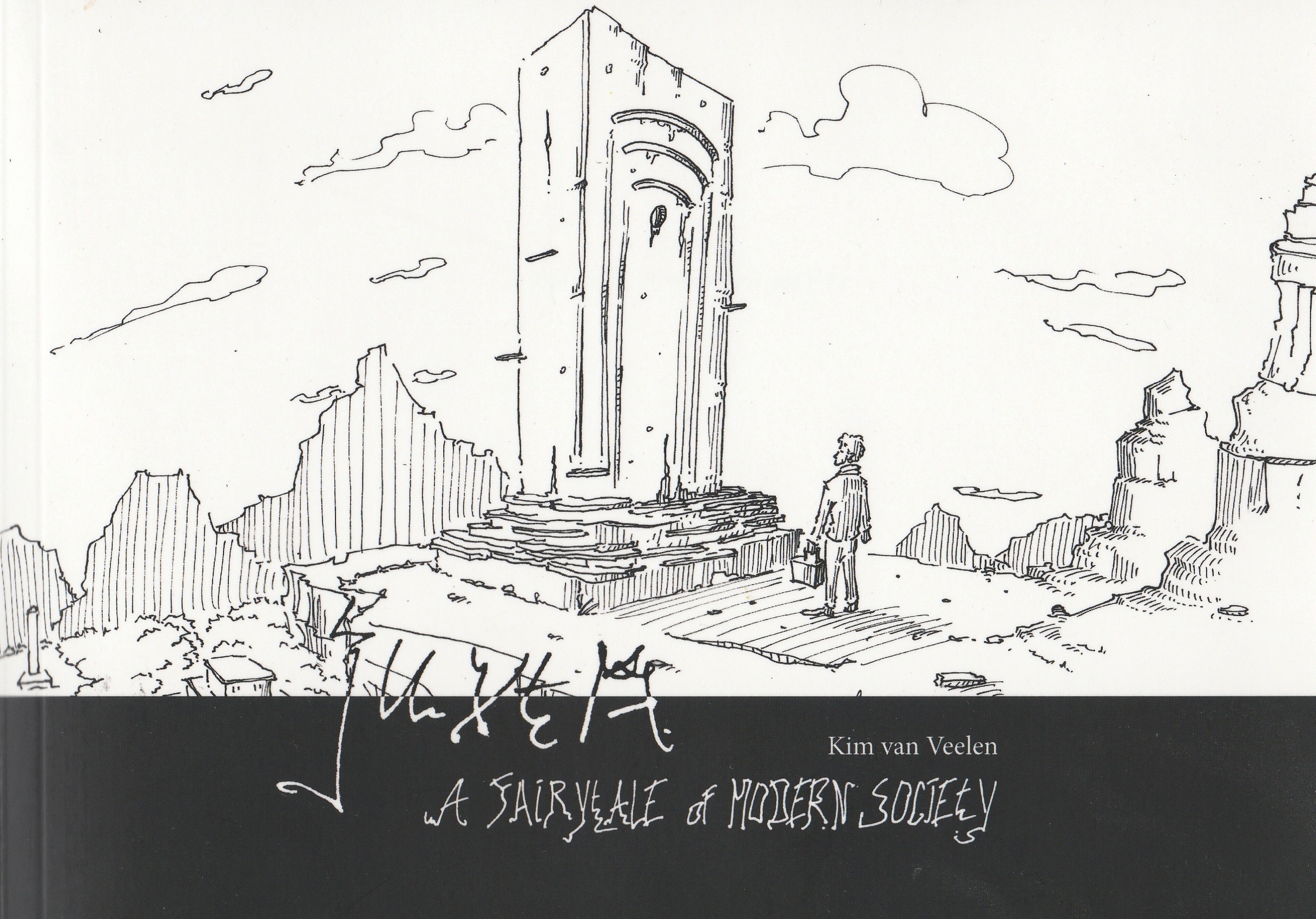Kim is kunstenaar. Kim tekent. Veel. Op een gegeven moment begon hij een verhaallijn te zien in de lijnen die hij elke dag maakte. Hij ging er een boekje van maken en vroeg mij het voorwoord te schrijven. Dat deed ik graag. Dat was bijna een jaar geleden en ik snap niet dat ik dit stuk hier nog niet eerder heb geplaatst, maar goed, hier is het. Het boek raad ik – uiteraard – van harte aan en is gelukkig nog steeds te koop bij Boekscout. Kim is ondertussen ‘alive and well and working on a more ambitious project’.
Juxta – A Fairytale of Modern Society
by Kim van Veelen
I am not very proud of being an human being; in fact, I distinctly dislike the species in many ways. I can readily conceive of beings vastly superior in every respect.
– H. P. Lovecraft
Juxta can be seen as Kim’s first graphic novel, but it’s not. We’ll get to that later.
In Juxta we enter a mythic world with ancient gods and antique landscapes combined with a dystopian view on the consumer lifecycle. Here, the gods rule and ritual is more important than science. Does that sound familiar?
Technology has become an important part of our lives, the mobile phone is indispensable. Independent entrepreneurship promises us the ultimate freedom while the youngsters in this second millennial AC are still searching for the essence of leadership.

to what people are” – Juxta
This is the world Kim grew up in and, in his art he mixes what he sees around him with the myths of Mesopotamia. Mesopotamia, in fact the whole region known as the Middle East, now torn by a seemingly endless war, once produced multiple empires and civilizations. Mesopotamia is known as the “cradle of civilization” primarily because of two developments that occurred in the 4th millennium BC, in the region of Sumer (now Iraq): the rise of the city as we recognize that entity today and the invention of writing.
In fact writing is also known to have developed in Egypt, in the Indus Valley and in China, and, in a very different, independent and still mysterious way, in South America. In the world of today, writing is transformed into clicking on emoticons. And in the world of Juxta the city of today is mostly in ruins. The digital society has survived (including, thank some gods, Wi-Fi), but not in the shape we see today. There is no Facebook’s Marck Zuckerberg or Apple’s Steve Job. Here the High Priest and entrepreneurs are nameless, but the gods are called by name.
In the world of Juxta we see the same sense of the tiny humans living under a great, incomprehensible universe. If the Mesopotamians always had to be at the ready for the godly ruler of high priest, people nowadays are serving 24/7 the godly Client. Between the lines of Juxta we read the conception of the Consumer or the Client as an incarnation of Ego. And the gods provide them with the necessary tools: a smartphone, 4G and Wi-Fi. Basics for society. Not unlike H.P Lovecraft, Kim mixes the world we know with another dimension to tell his story.
This is not a novel
The title of this book, Juxta, is derived from the concept of juxtaposition. According to Wikipedia, this is an act or instance of placing two elements – preferably contradictive or unrelated elements – close together or side by side. This is often done in order to compare and contrast the two, to show similarities or differences. In art, juxtaposition will make both elements, and the whole of the artefact, gain weight. That’s what we see happening in Juxta, both in the technique of the drawings as the theme of the narrative. The objects here are the icons of the client and consumer and the gods. In his work, Kim aims at putting those object in their ultimate position in which they communicate under the ultimate tension. Especially in his statues, the tension of the construction is quite literally.

never return
from the forest.
They have acceptes
silence,
lost their elic,
lost their connection.” – Juxta
We, that is Kim and me, talked about this book in his studio In Space. That is less science fiction then it sounds. In fact his ‘studio’ is a garage on the grounds of a democratic school called ‘In Space’. Kim shares the garage with a marvelous old-timer reconstruction job and the only daylight he gets is when the folding door is opened. A recurring topic in our talks is how to give shape to artistic ideas, or: how to produce thought in tangible items.
When I talked about this book as a graphic novel, he shunned that term. I guess he sees it as an art-book. To Kim the story and the drawings of Juxta are just a mold in which he can pour some (actually just a tiny bit) of his artistic imagination. The book may be a fantasy, it displays some real and earnest views on contemporary society.
Kim does quite a bit of juxta positioning himself, in his art in a broader sense. For example he has made flat set pieces that act three-dimensional on stage. He also makes 3D statues out of the drawings you see on the flat pages of this book. That’s right, and although the statues are quite small they also have ‘in real life’ the sensation of greatness, probably even more so. And not only because of the juxtaposed dimensions. It is simply because Kim is a great artist.
See the website veel.org for more of Kim’s work and follow him on Instagram. Believe me – clicking is worth the effort
Palescue, April 2018

